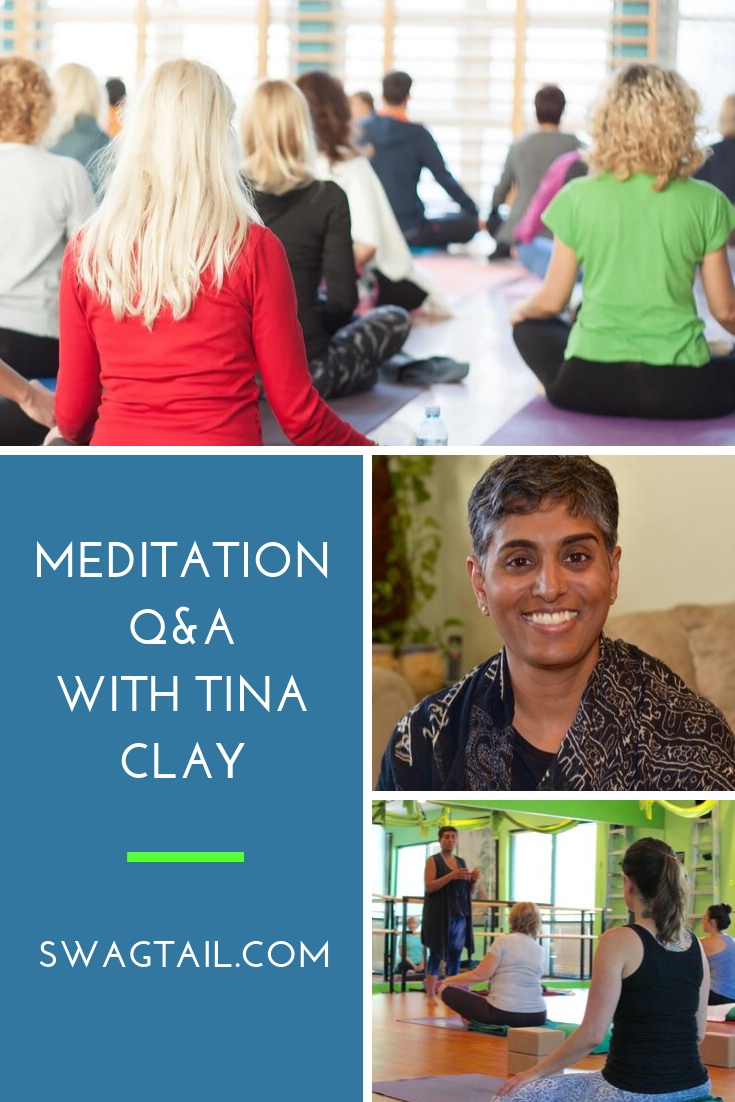 Starting a formal meditation practice can seem daunting at first. You might be uncertain about where or how to start. Yet, if you already practice yoga, you’re doing a moving meditation. And, in this interview with Tina Clay, a talented yogi for over 20 years, she reveals how you can add another layer of peace, compassion, and freedom to your life via other forms of meditation.
Starting a formal meditation practice can seem daunting at first. You might be uncertain about where or how to start. Yet, if you already practice yoga, you’re doing a moving meditation. And, in this interview with Tina Clay, a talented yogi for over 20 years, she reveals how you can add another layer of peace, compassion, and freedom to your life via other forms of meditation.
I first met Tina over a year ago when speaking about social media marketing at her Bend Yoga Teacher Training program. Before the weekend began, we sat down over a glass of kombucha to get to know each other better.
Despite having car problems just minutes before our meeting, Tina was calm and centered. Her eyes sparkled with confidence. And, her soft-spoken tone made me lean in with more and more curiosity with each story she told about her life.
It took only moments for us to bond over a love for meditation. And I knew instantly that I wanted to pick her brain more about her practice of it, as well as how she shares it with her yoga students.
So, whether you want to try a formal meditation practice–or deepen the one you already have–this interview can inspire the next steps of your journey.
Photo Credit(s): Tina Clay
INTRODUCING TINA CLAY
For Tina, meditation was part of her upbringing, family, and culture because she was raised in the Hindu tradition. Some time was spent everyday with meditation in some form or another. Plus, she spent a significant number of years as a child in India. In any case, those formative years in meditation weren’t conceptual or formal–she just did it!
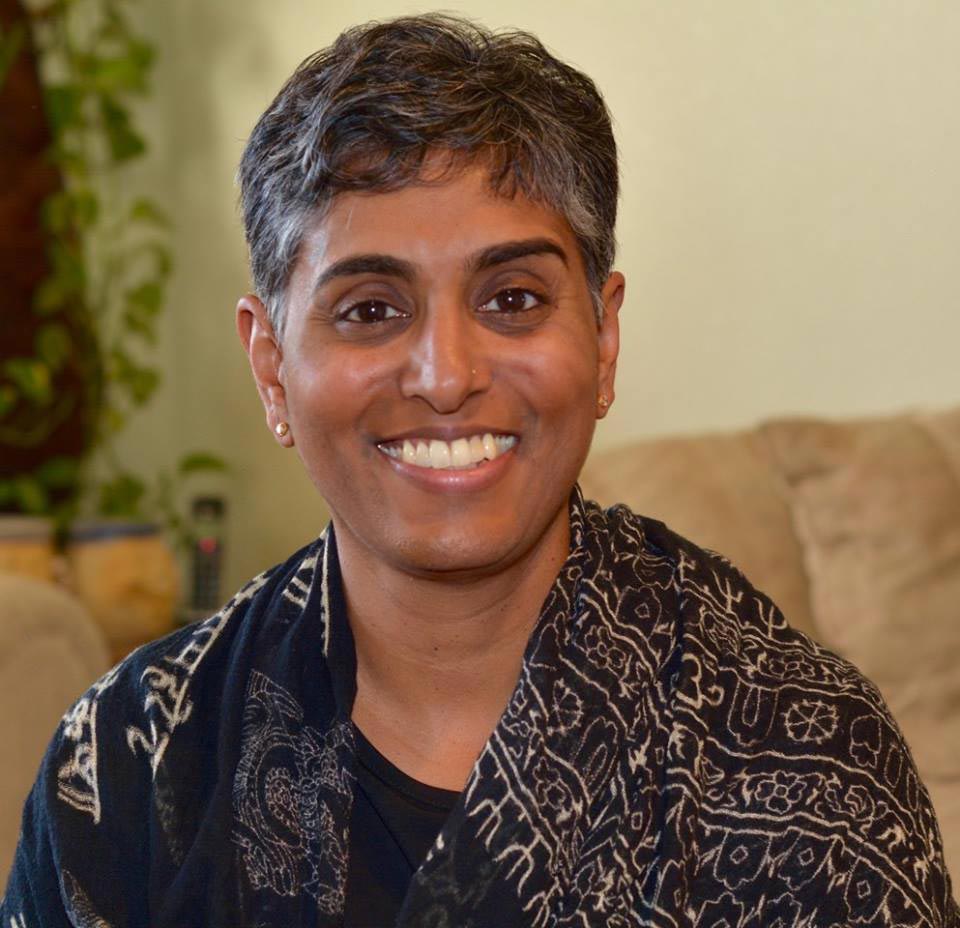 It wasn’t until [insert number] years later that Tina was exposed to asana and pranayama aspects of yoga. The practice was so profound in helping her recover from postpartum depression, that she began teaching yoga herself.
It wasn’t until [insert number] years later that Tina was exposed to asana and pranayama aspects of yoga. The practice was so profound in helping her recover from postpartum depression, that she began teaching yoga herself.
But just doing the asana and movement practice led Tina to sense there was something more. She felt there was more to be experienced than the postures themselves, and Tina started to ask, “What’s behind it all?”
That led her to a formal education of meditation. She completed 300 hours of study in Mindful Yoga and Meditation, which weaves Yoga and Dharma in one’s practice of postures, seated meditation, and walking meditation.
Not sure what Dharma is, keep reading! Plus, you’ll discover how Tina seamlessly brings meditation into the weekly classes she teaches in Northern California, her teacher training program, and her global retreats.
STARTING A MEDITATION PRACTICE
KYM: What is a beginner’s mind?
TINA: Traditionally, the concept of beginner’s mind comes from
the Zen practice of meditation, and it speaks to the state of mind when you don’t try to make something happen. Said another way, whenever you start something new, you want to approach it without any expectations. This will allow the experience to unfold in a natural way.
KYM: Where did your formal education begin? And, how would you suggest someone start a meditation practice on their own?
TINA: My formal training began with
an 8-week Mindfulness-Based Stress Reduction (MBSR) course. This program was developed by Jon Kabat-Zinn in 1979 as a way to bring mindfulness–or conscious awareness–into a secular setting. In fact, MBSR was initially used in the Massachusetts general hospital as a way to reduce suffering for patients with chronic pain.
From there, I was interested in doing a 5-day silent retreat at Spirit Rock, which is a fantastic Buddhist meditation center in Marin, California.
But nowadays, the concept of mindfulness is very mainstream. There are many different forms of meditation that you can try and much simpler ways you can begin than an 8-week course or silent retreat.
There are apps that teach you to meditate at your own pace. Or, you can read a book, like:
- Mindfuness for Beginners, by Jon Kabat Zinn
- Meditation for Beginners, by Jack Kornfield
- Radical Acceptance, by Tara Brach
But I think finding a meditation teacher–whether online or in person–is a really helpful way to guide your growth. You will have someone to answer questions that arise, such as “Is what I’m experiencing normal?” A teacher can then validate your experience, and offer immediate feedback about it.
KYM: What one factor would best determine your route to start a meditation practice?
TINA: I would say your intention is one of the biggest factors to consider
when selecting a format in which to learn. Your level of dedication and discipline also comes into play, though, as does your general personality.
Some people can make a formal meditation practice their next big self-improvement project and go at it with a lot of vigor. If your style is to go all-in from the beginning, then an 8-week course or full immersion experience might be best for you.
Yet, while meditation on the outside appears to be an individual activity done quietly at home, it’s really best supported when you do it in the company of others. I suggest you join a group of people to sit with. Or, find a teacher in your area. The support of others can be a significant factor in making a meditation practice stick over time.
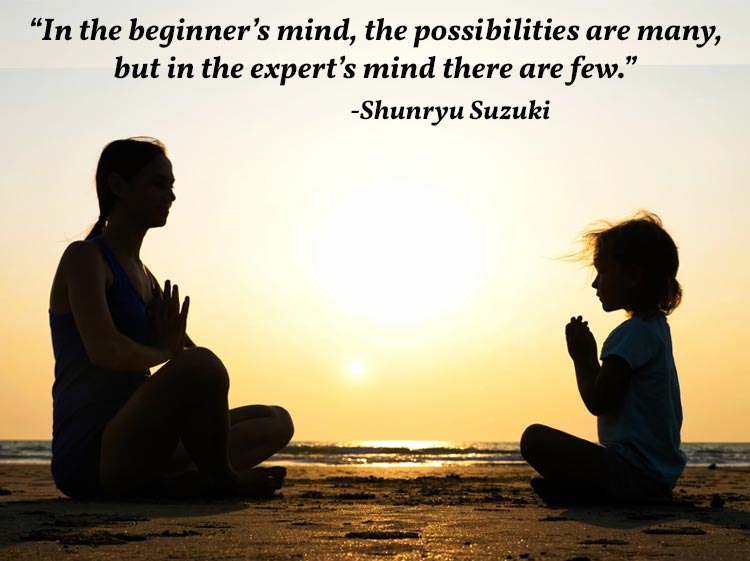
Photo Credit: alexeg84
VARIOUS MEDITATION STYLES
KYM: In your opinion, what’s the purpose of having different styles?
TINA: Let’s start by looking at the Buddha. He taught about the dharma.
He spoke about the causes and conditions of suffering, and how to end them. From that foundation, his teachings were flavored with other cultures. And just like many forms of yoga has blossomed out of a few lineages, so, too, has various streams of meditation expanded.
The three main streams of meditation include:
- Zen meditation, which is mostly practiced in Japan, Korea, and China. Thich Nhat Hanh is perhaps the most well-known teacher of this philosophy.
- Theravada (pronounced “terra-VAH-dah”) is prominent in Thailand and Burma, and it gave rise to what is known as Vipassana today.
- A Tibetian practice. Both Pema Chodron and the Dalai Lama are recognized leaders in this lineage.
Even within these three main avenues, there are subsets. There might be shifts in focus on how you might practice or a variety of rituals, but each style of meditation points to the same experience–how to end suffering and experience freedom.
Because of the variety of styles available today, people can easily find one that speaks to them. And, you might stay with that tradition for a long time. Or, you could branch out and try out other styles. Currently, you have the ability to explore, without being narrow in your experience.
KYM: What style is most satisfying to you right now?
TINA: Right now I like to use a compassion practice.
Essentially, it’s a heart-based practice designed to cultivate loving-kindness and gratitude and empathy.
KYM: What does that look like in actual practice?
TINA: When you sit down to meditate, start by bringing your attention inward.
You might connect with the feeling of your body breathing, or some other sensation in your body. In a mindfulness practice, you would just stay aware of these sensations as the experience unfolds. You likely wouldn’t do anything about it. Instead, you would allow it to unfold.
When you set your intention on compassion, you direct more awareness to the heart-space. Then, you send kindness to yourself via words or physical touch–like placing a hand on the heart or the belly. You might even imagine yourself being held by a white light or Divine Being.
A compassion practice can take many different forms. Yet, the goal is to amplify the kindness we express toward ourselves. Likely, this is not something many children are taught growing up. And while we outwardly demonstrate compassion to others, many don’t learn how to offer it to themselves.
KYM: What words do you use in a compassion practice?
TINA: In a guided meditation, a teacher will say the phrases out loud,
and as a practitioner, you say them silently to yourself. These phrases might be:
- “May I be happy.”
- “May I be filled with a feeling of kindness.”
- And, “May I be free of pain and suffering.”
You can also chant in a compassion practice. For example, a group will collectively chant the Metta Sutta, which is the discourse by the Buddha on loving-kindness. In either case, as you hear these words, and absorb them, your body starts to soften.
I like the analogy of hard ground that is deprived of rain. Little drops of water start to soften the Earth. In the same way, you often have this hardened outer shell that you live with–this armor–and the phrases and compassion practice start to remove that shell.
PERSONAL CHANGES VIA MEDIATION
KYM: What shifts or changes has meditation created in your own life?
TINA: Once you begin to meditate, and are ready to embrace life as it unfolds,
then magic starts to happen. You notice more. Some changes are big. But a majority of these changes are small. Things that would bother me in the past, don’t irritate me now. As a parent, I may still yell at my kids. But then I offer myself compassion because I’m hurting in some way or am not meeting my own needs. I can forgive myself, reflect on the experience, and learn for the future. I can also meet my kids where they are, and offer them compassion, too.
Bigger changes have been shifts in my relationships. I have healed past trauma with meditation and yoga. And, I have done lots of forgiveness of myself and others.
Life is still challenging, and it can be overwhelming at times. Meditation is a great resource that gives me the space in which to say, “It’s okay, and I’m okay.”
KYM: Has your study and experience of meditation altered the way you teach yoga?
TINA: Absolutely!!
At this point, to me, the two aren’t separate at all. Whether I’m teaching vinyasa flow or a power hour or a restorative class, for me it’s all the same. You can call it whatever you want, but I’m teaching meditation in yoga.
In some classes, a meditative component is highlighted more than asana. In others, asana is the emphasis (and stealthily weave in meditation without calling it that). For me, it’s all meditation–moving or still.
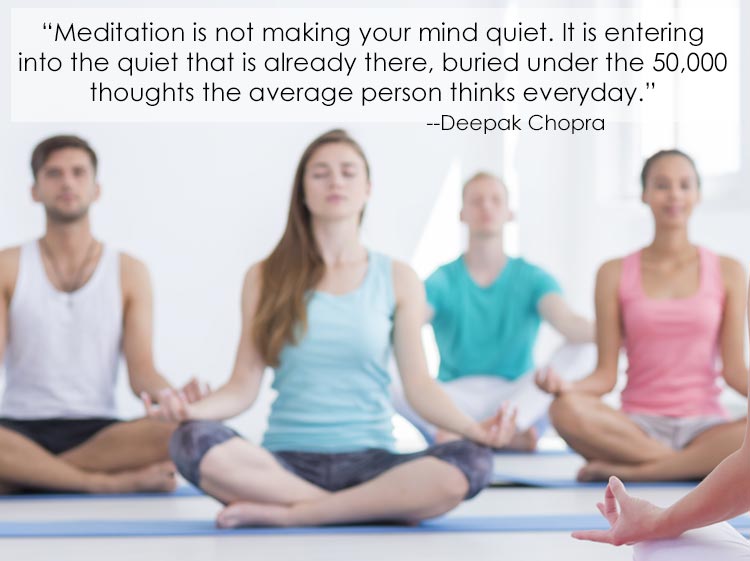
Photo Credit: Photographee.eu
MEDITATION AND YOGA TEACHER TRAINING
KYM: You also teach meditation classes and run the Bend Yoga Teacher Training. How do you approach the topic of meditation in your program?
TINA: Students know coming into our program that meditation and mindfulness is part of the practice.
From Day 1, we say that yoga and meditation are not separate. It’s like looking at a diamond from a different angle. You might be getting a different view, but it’s still a diamond.
Our program is broken down into 15-hour modules. We dedicate one of those modules solely to meditation, and teach our students how to guide or lead meditation to a group. Saying that, we also incorporate some aspect of meditation in every module and physical practice. It’s part of the entire experience, and we really did it for the full 200-hours. Every time our students get on their mat, they have a chance to meditate.
And I think my colleague, Christina Rairdan, and I were very clear that you don’t have to call it meditation. You don’t have to guide meditation or study Buddhism to be doing it. Any time you are helping someone discover their bodies through movement and breath, you are creating a pathway inward. That is meditation.
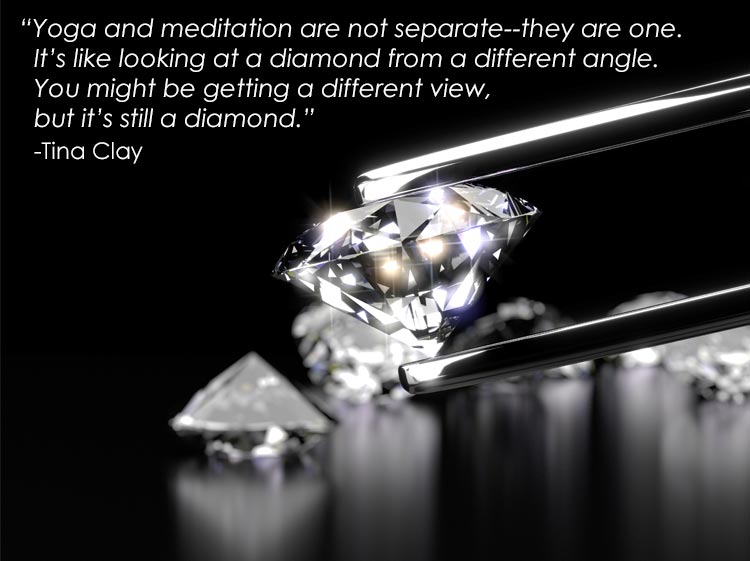
Photo Credit: Sarawut795
PUTTING IT ALL TOGETHER
Yoga a way to journey inward and connect with the Divine that is within you. And while you might currently use asana and pranayama to do that, a formal meditation practice can add another layer of peace, compassion, and freedom to your life. The best part is that you have numerous avenues and resources available today to get started.
Take Action Now
- Download our Tips and Resources Guide for Meditation below.
- Check out our other articles on seated meditation or moving meditation to gain more insight into the practice.
- Research meditation classes and teachers in your area (or even at your studio), and give one a try this week.


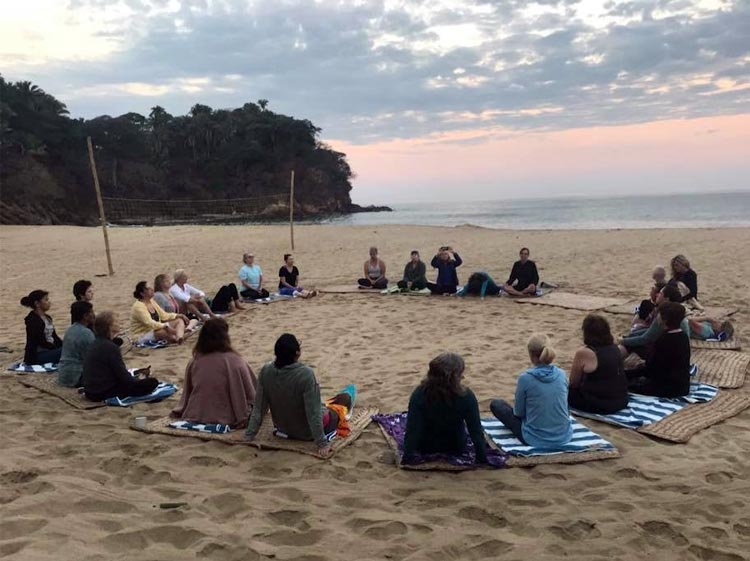
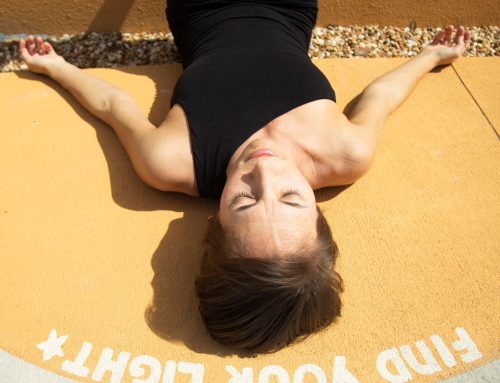

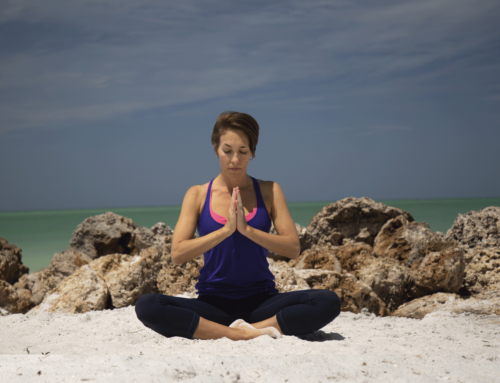
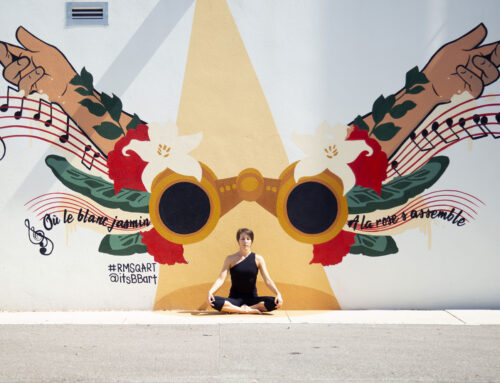
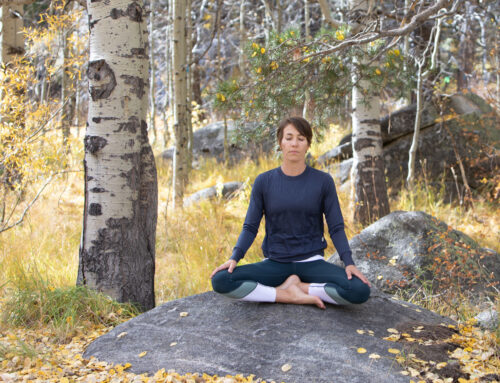
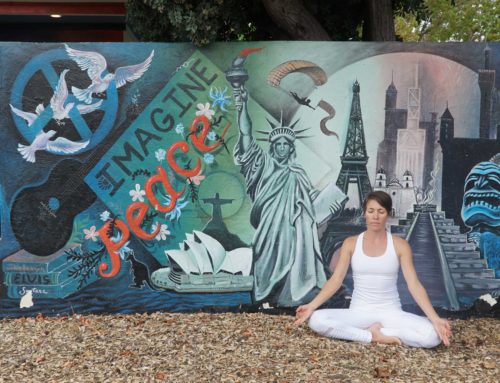
Leave A Comment